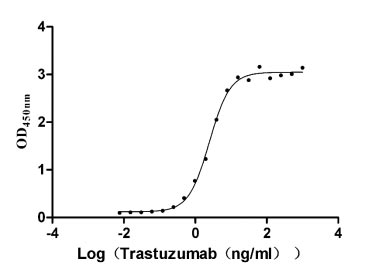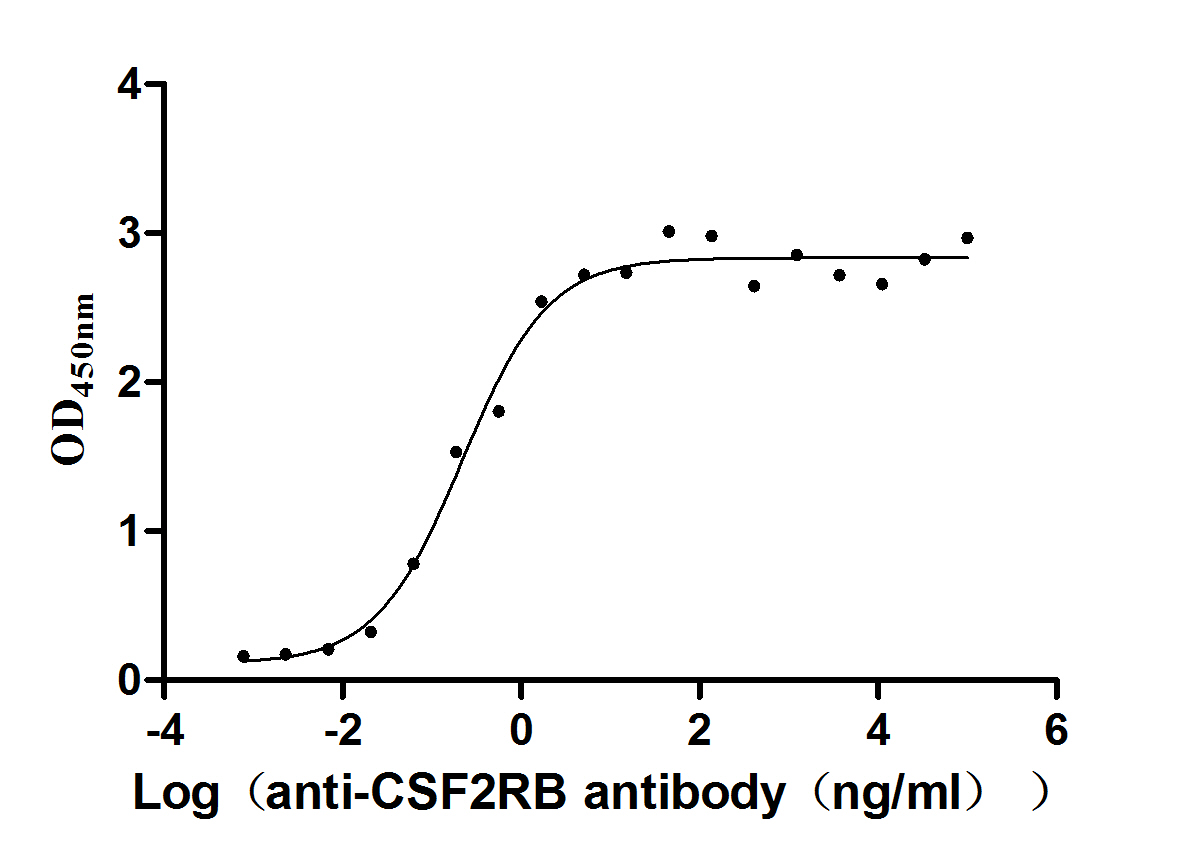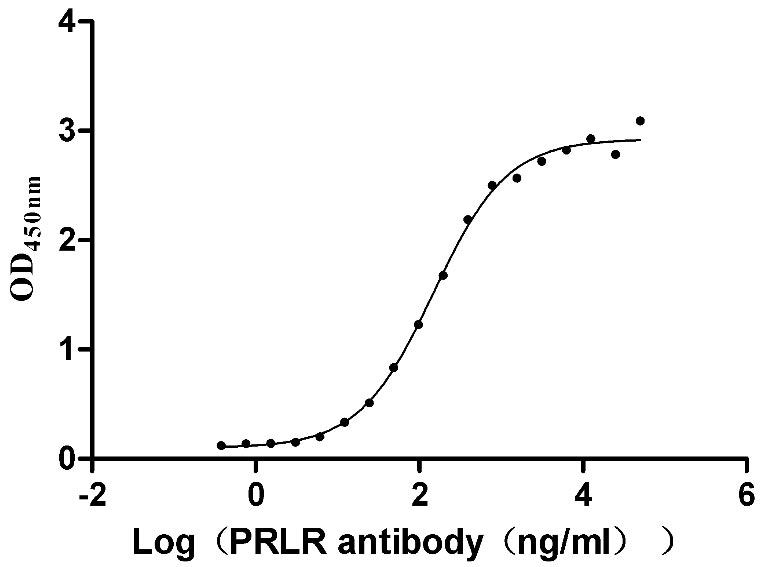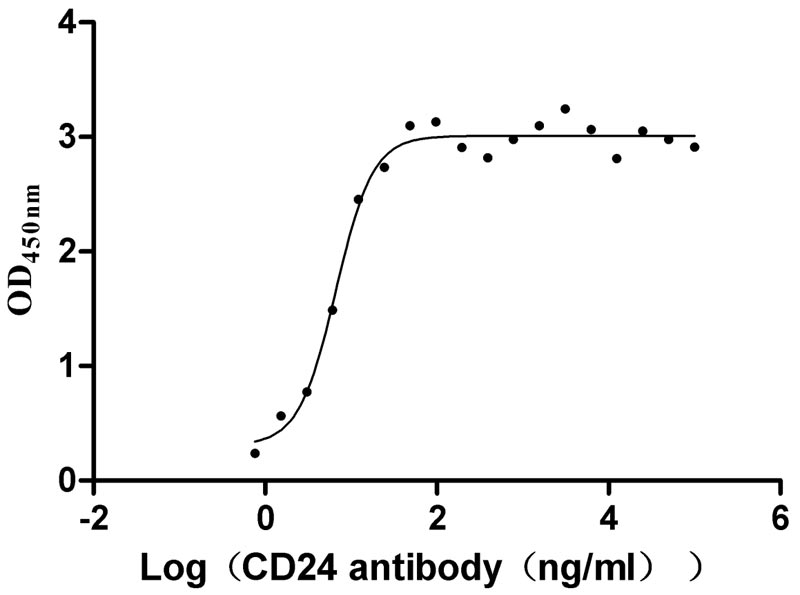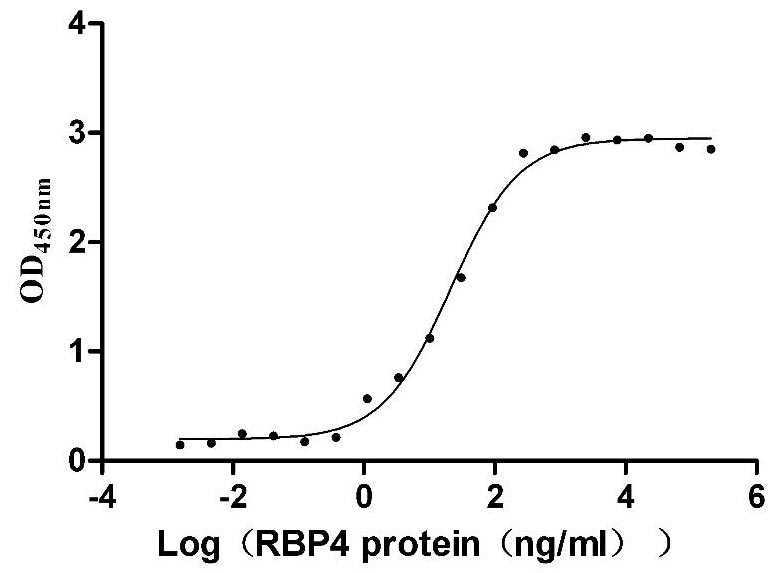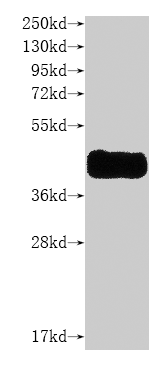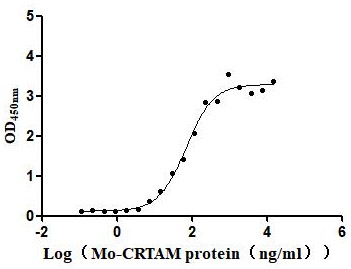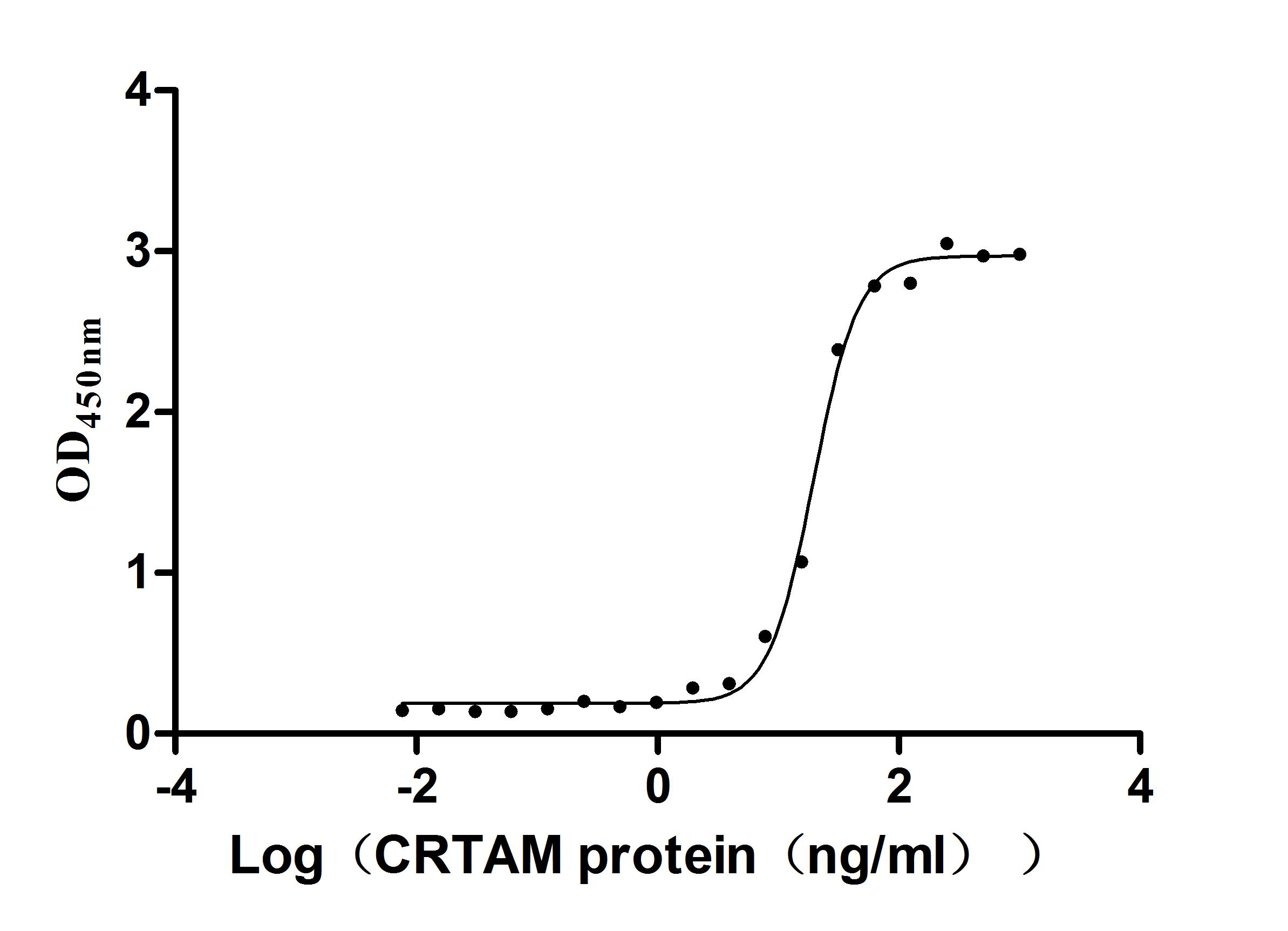Recombinant Mouse Sphingosine-1-phosphate lyase 1 (Sgpl1), partial
-
货号:CSB-YP021197MO
-
规格:
-
来源:Yeast
-
其他:
-
货号:CSB-EP021197MO
-
规格:
-
来源:E.coli
-
其他:
-
货号:CSB-EP021197MO-B
-
规格:
-
来源:E.coli
-
共轭:Avi-tag Biotinylated
E. coli biotin ligase (BirA) is highly specific in covalently attaching biotin to the 15 amino acid AviTag peptide. This recombinant protein was biotinylated in vivo by AviTag-BirA technology, which method is BriA catalyzes amide linkage between the biotin and the specific lysine of the AviTag.
-
其他:
-
货号:CSB-BP021197MO
-
规格:
-
来源:Baculovirus
-
其他:
-
货号:CSB-MP021197MO
-
规格:
-
来源:Mammalian cell
-
其他:
产品详情
-
纯度:>85% (SDS-PAGE)
-
基因名:
-
Uniprot No.:
-
别名:Sgpl1; Spl; Sphingosine-1-phosphate lyase 1; S1PL; SP-lyase 1; SPL 1; mSPL; EC 4.1.2.27; Sphingosine-1-phosphate aldolase
-
种属:Mus musculus (Mouse)
-
蛋白长度:Partial
-
蛋白标签:Tag type will be determined during the manufacturing process.
The tag type will be determined during production process. If you have specified tag type, please tell us and we will develop the specified tag preferentially. -
产品提供形式:Lyophilized powder
Note: We will preferentially ship the format that we have in stock, however, if you have any special requirement for the format, please remark your requirement when placing the order, we will prepare according to your demand. -
复溶:We recommend that this vial be briefly centrifuged prior to opening to bring the contents to the bottom. Please reconstitute protein in deionized sterile water to a concentration of 0.1-1.0 mg/mL.We recommend to add 5-50% of glycerol (final concentration) and aliquot for long-term storage at -20℃/-80℃. Our default final concentration of glycerol is 50%. Customers could use it as reference.
-
储存条件:Store at -20°C/-80°C upon receipt, aliquoting is necessary for mutiple use. Avoid repeated freeze-thaw cycles.
-
保质期:The shelf life is related to many factors, storage state, buffer ingredients, storage temperature and the stability of the protein itself.
Generally, the shelf life of liquid form is 6 months at -20°C/-80°C. The shelf life of lyophilized form is 12 months at -20°C/-80°C. -
货期:Delivery time may differ from different purchasing way or location, please kindly consult your local distributors for specific delivery time.Note: All of our proteins are default shipped with normal blue ice packs, if you request to ship with dry ice, please communicate with us in advance and extra fees will be charged.
-
注意事项:Repeated freezing and thawing is not recommended. Store working aliquots at 4°C for up to one week.
-
Datasheet :Please contact us to get it.
靶点详情
-
功能:Cleaves phosphorylated sphingoid bases (PSBs), such as sphingosine-1-phosphate, into fatty aldehydes and phosphoethanolamine. Elevates stress-induced ceramide production and apoptosis. Required for global lipid homeostasis in liver and cholesterol homeostasis in fibroblasts. Involved in the regulation of pro-inflammatory response and neutrophil trafficking. Modulates neuronal autophagy via phosphoethanolamine production which regulates accumulation of aggregate-prone proteins such as APP. Seems to play a role in establishing neuronal contact sites and axonal maintenance.
-
基因功能参考文献:
- These results show that both a primary defect in cholesterol trafficking and S1P lyase deficiency cause overlapping phenotypic alterations, and challenge the present view on the role of sphingosine in lysosomal Ca(2+) homeostasis. PMID: 28262793
- Partial genetic deletion of Sgpl1 protected mice against ventilator induced lung injury. PMID: 29301259
- Study identifies sphingosine 1-phosphate metabolism as a novel player in modulating synaptic architecture and plasticity. PMID: 27883090
- SGPL1 modulates neuronal autophagy via phosphatidylethanolamine production PMID: 28521611
- Study verifies the role of a high-ranked gene in dysregulation of sphingolipid metabolism in the disease and demonstrate that inhibiting the enzyme, sphingosine-1-phosphate lyase 1 (SPL), has neuroprotective effects in Huntington's disease models. PMID: 28931805
- Epigenetic regulation of pro-inflammatory cytokine secretion by sphingosine 1-phosphate (S1P) in acute lung injury, and the role in this process of S1P lyase has been described. (Review) PMID: 27720306
- Mutations in sphingosine-1-phosphate lyase cause nephrosis with ichthyosis and adrenal insufficiency PMID: 28165339
- Sphingosine-1-phosphate lyase mutations cause primary adrenal insufficiency and steroid-resistant nephrotic syndrome. PMID: 28165343
- deleting SPL in CD11c(+) dendritic cells (DCs), rather than thymic epithelial cells or other stromal cells, disrupts the sphingosine-1-phosphate gradient, preventing egress. PMID: 27810923
- The sphingosine-1-phosphate lyase contributes to the restriction of Legionella pneumophila in murine macrophages. PMID: 26741365
- Studies suggest that S1PL is a novel endogenous suppressor of pulmonary fibrosis in human idiopathic pulmonary fibrosis and animal models. PMID: 26286721
- Although the observed inhibitory effect was not as strong as that of 4-deoxypyridoxine (a VB6 analog SPL inhibitor), these findings may be useful for further understanding the mechanism of action of THI. PMID: 25381637
- upregulation of multidrug resistance transporters contributes to the chemoresistance of S1P lyase-deficient MEFs PMID: 25385827
- Sphingosine-1-phosphate lyase downregulation promotes colon carcinogenesis through STAT3-activated microRNAs. PMID: 25347472
- Findings suggest that sphingosine phosphate lyase (S1P lyase) expressed in the thymic medullary perivascular spaces keeps the tissue sphingosine 1-phosphate low around the vessels and promotes thymic egress via up-regulation of S1P receptor 1 (S1P1). PMID: 24343820
- Data indicate that SGPL1 sphingosine 1-phosphate lyase (aldolase) mRNA is significantly increased in the periinfarct cortex. PMID: 23936150
- Leukocyte Sgpl1 as critical factor in monocyte macrophage differentiation and function. PMID: 23700419
- Inducible Sgpl1 knockout mice are protected in experimental autoimmune encephalomyelitis (EAE). PMID: 23544080
- Sphingosine-1-phosphate lyase has many undiscovered physiological functions apart from its role in immunity PMID: 22781001
- S1PL deficiency increases sphingolipid formation via recycling at the expense of de novo biosynthesis in neurons. PMID: 22291021
- Data show that S1P lyase knockout mice with reduced S1P lyase activity (resulting in increased bio-available S1P) had improved survival compared with wild-type littermates. PMID: 21556483
- S1P lyase regulates DNA damage responses through a sphingolipid feedback mechanism. PMID: 21368890
- Sphingosine-1-phosphate lyase (SPL) contributes to oxidative stress by depleting sphingosine-1-phosphate pools available for cardioprotective signaling. SPL inhibition as a strategy for reducing cardiac ischemia-reperfusion (I/R) injury. PMID: 21335477
- a genetic block in S1P degradation elicits a pro-inflammatory response but impairs neutrophil migration from blood into tissues PMID: 21173151
- Sphingosine 1-phosphate lyase deficiency disrupts lipid homeostasis in liver. PMID: 20097939
- S1P lyase-deficient cells show that S1P metabolism contributes to long-term regulation of cellular Ca2+ storage. PMID: 19913094
- SPL may be involved in the regulation of intracellular S1P levels during this differentiation PMID: 12584204
- Data report the characterization of the expression, localization, and topology of sphingosine-1-phosphate lyase. PMID: 15522238
- These results provide evidence of the existence of an alternative S1P lyase. PMID: 15737611
- Products of the Spl pathway stimulate mitogenesis. PMID: 15938718
- it was concluded that lymphocyte egress is mediated by sphingosine 1-phosphate (S1P) gradients that are established by S1P lyase activity and that the lyase may represent a novel immunosuppressant drug target PMID: 16151014
- genetic or epigenetic changes affecting intestinal sphingosine-1-phosphate metabolism may correlate with and potentially contribute to carcinogenesis PMID: 17090686
- extracellular S1P is dephosphorylated and subsequently converted by cells, which appears to be important for clearance of the signaling molecule S1P in the local tissue environment after infections or injuries PMID: 18172856
- Data suggest that lymphocyte trafficking is particularly sensitive to variations in sphingosine 1-phosphate lyase (S1PL) activity and suggest that there is a window in which partial inhibition of S1PL could produce therapeutic levels of immunosuppression. PMID: 19119317
- sphingosine 1-phosphate subcellular origin is essential for its toxic effect in lyase-deficient neurons PMID: 19251691
- SGPL1-deficient mice exhibit postnatal discontinuation of early thymocytopoiesis starting at age 2 weeks and leading to accumulation of sphingosine 1-phosphate in lymphoid tissues, which blocks lymphocyte egress and induces thymus atrophy. PMID: 19748984
显示更多
收起更多
-
亚细胞定位:Endoplasmic reticulum membrane; Single-pass type III membrane protein; Cytoplasmic side.
-
蛋白家族:Group II decarboxylase family, Sphingosine-1-phosphate lyase subfamily
-
组织特异性:Highest levels are found in liver, small intestine and thymus, followed by kidney, lung, heart, spleen and brain (at protein level). Also detected in stomach, testis and skeletal muscle (at protein level).
-
数据库链接:
KEGG: mmu:20397
STRING: 10090.ENSMUSP00000090155
UniGene: Mm.412319
Most popular with customers
-
Recombinant Human Receptor tyrosine-protein kinase erbB-2 (ERBB2), partial (Active)
Express system: Mammalian cell
Species: Homo sapiens (Human)
-
Recombinant Human Cytokine receptor common subunit beta (CSF2RB), partial (Active)
Express system: Mammalian cell
Species: Homo sapiens (Human)
-
Recombinant Human Prolactin receptor (PRLR), partial (Active)
Express system: Mammalian cell
Species: Homo sapiens (Human)
-
Recombinant Human Signal transducer CD24 (CD24)-Nanoparticle (Active)
Express system: Mammalian cell
Species: Homo sapiens (Human)
-
Recombinant Mouse Transthyretin (Ttr) (Active)
Express system: Mammalian cell
Species: Mus musculus (Mouse)
-
Recombinant Human C-C chemokine receptor type 8 (CCR8)-VLPs (Active)
Express system: Mammalian cell
Species: Homo sapiens (Human)
-
Recombinant Mouse Cell adhesion molecule 1 (Cadm1), partial (Active)
Express system: Mammalian cell
Species: Mus musculus (Mouse)
-
Recombinant Human Cell adhesion molecule 1 (CADM1), partial (Active)
Express system: Mammalian cell
Species: Homo sapiens (Human)


